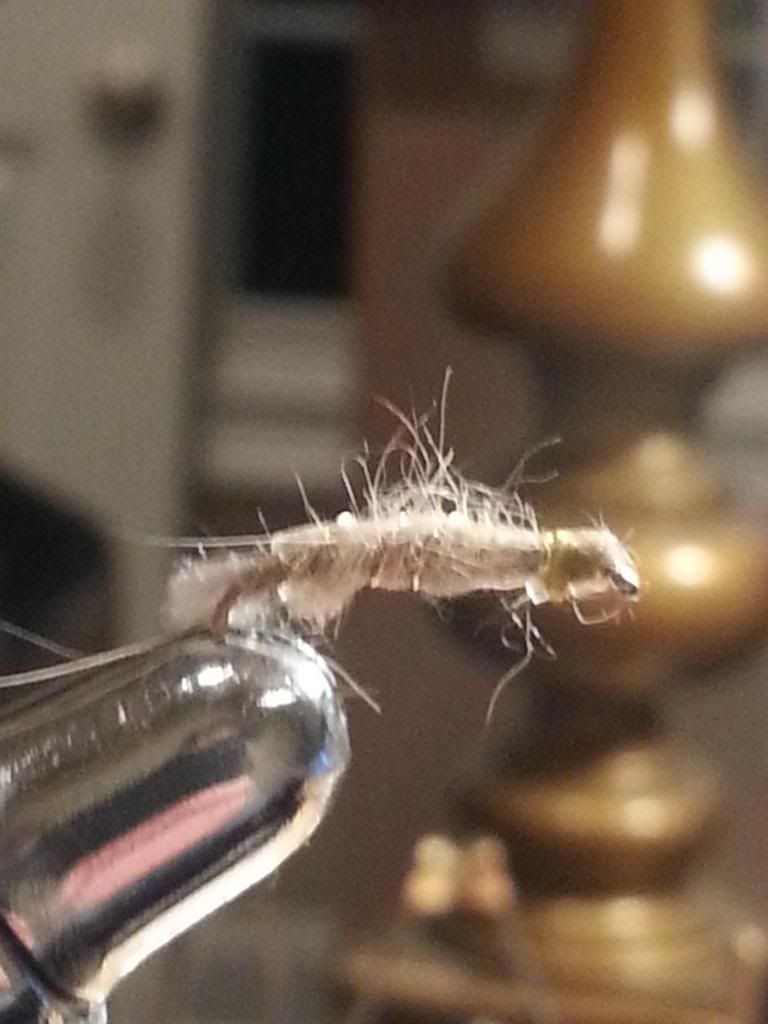BrookieChaser
Well-known member
- Joined
- Aug 6, 2013
- Messages
- 2,451
You don't need a dubbing brush. You can use velcro, or do like I do and use a dubbing needle.
The first fly I was taught to tie was a muskrat nymph.
Since you asked. On your shrimp the tail seems pulled to the backside of the hook (off the top of the shank). That can be remedied by allowing for thread pressure (i.e hold the tail material off the side facing you when tying it in). The body on a shrimp should taper like a cigar (narrow, wider, narrow). I think you had it until you got to the eye. Maybe I'm seeing head cement. That taper can be done with dubbing. I think your last wraps of wire are in the dubbing, which happens. If you keep the dubbing tighter (spin it more on the thread) this will allow the wire to stay on top. Then pull the bottom side dubbing out with the dubbing needle.
You're off to a good start. I agree with staying with larger sized flies. Don't tie small stuff until you get the basics on the larger sizes.
Hopefully that helps.
The first fly I was taught to tie was a muskrat nymph.
Since you asked. On your shrimp the tail seems pulled to the backside of the hook (off the top of the shank). That can be remedied by allowing for thread pressure (i.e hold the tail material off the side facing you when tying it in). The body on a shrimp should taper like a cigar (narrow, wider, narrow). I think you had it until you got to the eye. Maybe I'm seeing head cement. That taper can be done with dubbing. I think your last wraps of wire are in the dubbing, which happens. If you keep the dubbing tighter (spin it more on the thread) this will allow the wire to stay on top. Then pull the bottom side dubbing out with the dubbing needle.
You're off to a good start. I agree with staying with larger sized flies. Don't tie small stuff until you get the basics on the larger sizes.
Hopefully that helps.





